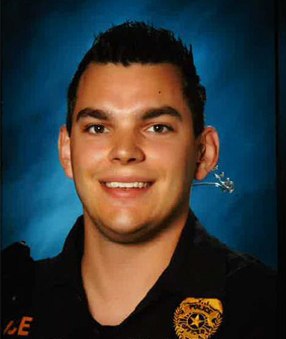With the start of the new school year comes more children crossing the street, and both state and local-level safety experts are offering motorists and parents tips to make sure no one gets hurt on the way to school.
According to the Washington State Department of Transportation, 521 pedestrians aged 19 years and younger were injured in collisions, and seven were killed, in the state of Washington during 2011.
With more than 1.1 million Washington children heading back to class this month, the Washington State Chapter of AAA is urging drivers to be aware of increased child pedestrian activity, and to be extra-cautious when backing out of driveways and parking spots in school zones and neighborhoods, especially during the morning and afternoon hours.
“As schools become more active with children, it is critical that drivers take extra precaution and adhere to the 20-mile-per-hour speed limit in school zones,” said Jennifer Cook, senior manager of corporate communications for AAA Washington. “The afternoon hours are particularly dangerous, with more than one-fourth of child pedestrian fatalities occurring between 3-7 p.m. during the last decade.”
Arlington Police Officer Seth McKinney, who serves at the School Resource Officer for the Arlington School District, recently offered readers of the city of Arlington’s e-newsletter some back-to-school advice which concurred with that of AAA, cautioning motorists to slow down not only for school zones and crosswalks, but also for changing weather conditions and areas of limited visibility.
“The daylight will grow shorter quickly, and students will find themselves in the dark, walking to and from school or driving in the dark,” McKinney wrote for the Aug. 30 e-newsletter. “Remember, you are required to have your headlights on a half-hour after sunset and a half-hour before sunrise. The safest is to always travel with your headlights on.”
“We will be spending a great deal of time conducting traffic enforcement and writing tickets in our school zones, both before and after school,” said Marysville Police Officer Dave White, who serves as one of the Marysville School District’s two School Resource Officers, along with Chris Sutherland.
“The commute to and from school is always of concern as it puts walking students and moving vehicles in very close proximity, which by its very nature is problematic,” Marysville Police Cmdr. Robb Lamoureux said.
AAA is strongly encouraging motorists to be on the lookout for AAA School Safety Patrollers — a clear sign that a driver is approaching a school zone — and to follow these four tips:
n Slow down and obey Washington state’s 20-mile-per-hour speed limit in school zones. According to the AAA Foundation for Traffic Safety, a pedestrian is nearly two-thirds less likely to be killed when struck by a vehicle traveling at 20 miles per hour, compared to a pedestrian struck by a vehicle traveling 30 miles per hour.
n Eliminate distractions. Sometimes kids dart into the road unexpectedly. Research shows that taking your eyes off the road for just two seconds doubles the chances of crashing. Avoid this risk by storing cell phones out of reach to prevent texting, calling or emailing while driving.
n Come to a complete stop. Research shows that more than one-third of drivers roll through stop signs in school zones or neighborhoods. Always come to a complete stop, and check for children on sidewalks and in crosswalks before proceeding.
n Plan for extra time. With school in session, there are more child pedestrians and children riding bicycles on streets and sidewalks. Drive slowly and choose alternate routes to avoid school zones if possible.
McKinney also noted that the fall weather will bring rain showers and cold temperatures, so when preparing their children for school, parents should make sure kids are dressed appropriately for outdoor weather, especially if they’re walking to school or waiting at bus stops for extended periods of time.
“As a parent, it is that time again to have conversations with your children about the appropriate places to cross the street, and what to look for, along with what to do if a stranger approaches your child,” said McKinney, who added that children who are now old enough to drive will need their own set of conversations with parents, about driving in adverse weather conditions and being prepared. “Some of those drivers have recently received their driver’s licenses and will feel inclined to give rides to friends, to and from school, though they may still be under the graduated driver’s license restrictions. Remind your young drivers of the laws and hold them accountable for their actions, both positive and negative.”
In turn, both of the School Resource Officers for Marysville have pledged to do all that they can to help protect the community’s children, and look forward to interacting with students and school staff members again in the new school year.
“The security of our schools and safety of our students is our highest priority as School Resource Officers,” Sutherland said. “It is important we continue to develop relationships with these kids as it provides us with opportunities to mentor students and role-model for them.”
More school zone driving tips can be found on AAA’s “School’s Open, Drive Carefully” webpage at http://exchange.aaa.com/safety/child-safety/schools-open-drive-carefully.
To subscribe to the city of Arlington’s e-newsletter, log onto http://arlingtonwa.gov.








